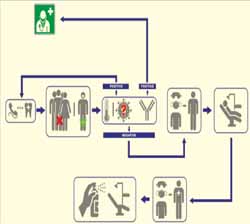Prevention and safety in the dental office after Novel Human Coronavirus outbreak: unresolved questions and future directions

Published: 15 April 2020
Abstract Views: 2561
pdf: 1885
Publisher's note
All claims expressed in this article are solely those of the authors and do not necessarily represent those of their affiliated organizations, or those of the publisher, the editors and the reviewers. Any product that may be evaluated in this article or claim that may be made by its manufacturer is not guaranteed or endorsed by the publisher.
All claims expressed in this article are solely those of the authors and do not necessarily represent those of their affiliated organizations, or those of the publisher, the editors and the reviewers. Any product that may be evaluated in this article or claim that may be made by its manufacturer is not guaranteed or endorsed by the publisher.


 https://doi.org/10.23805/JO.2020.12.01.11
https://doi.org/10.23805/JO.2020.12.01.11







